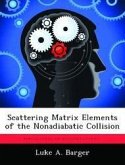Effective potential energy surfaces (PESs) are calculated for the nonadiabatic collision. This calculation employed 1 2A2, 2 2A2, and 1 2A3 adiabatic PESs numerically calculated at the state-averaged multiconfigurational self-consistent field (SA-MCSCF)/configuration interaction (CI) level for several values of the H2 bond length, H2 orientation angle, and boron distance. The associated nonadiabatic coupling terms (NACTs) were calculated from the SA-MCSCF/CI wave functions using analytic gradient techniques. A line integral through the NACTs was then used to determine the adiabatic-to-diabatic mixing angle required to transform from the 1 2A2 and 2 2A2 adiabatic basis to a corresponding diabatic basis. When all nonadiabatic coupling terms between all electronic states are considered, the line integral is path independent. However, only NACTs between the 1 2A2 and 2 2A2 states were considered in these calculations, and the line integral was therefore path dependent. The path dependence of the line integral was used to characterize the error introduced by employing a truncated set of adiabatic states. A method for reducing the effect of this error through the use of symmetry derived boundary conditions was developed. The resulting diabatic PESs were combined with the total B + H2 rotational kinetic energy and boron spin-orbit coupling to yield diabatic effective PESs. The diabatic effective PESs were diagonalized to yield adiabatic effective PESs.








